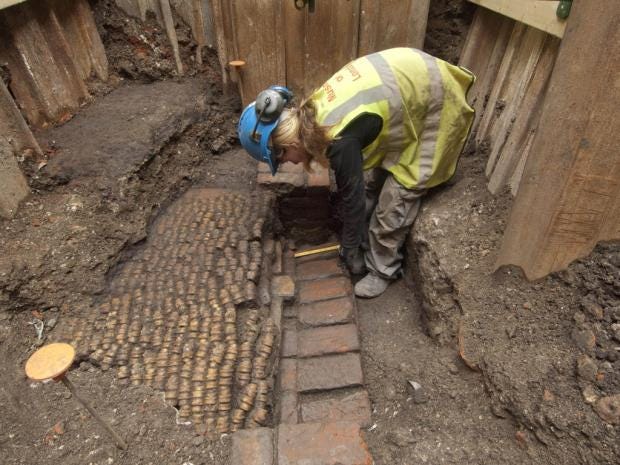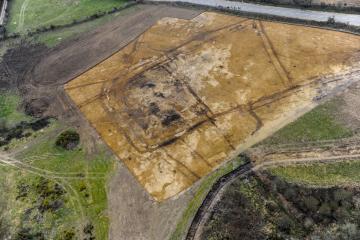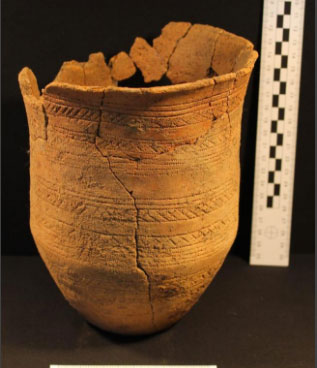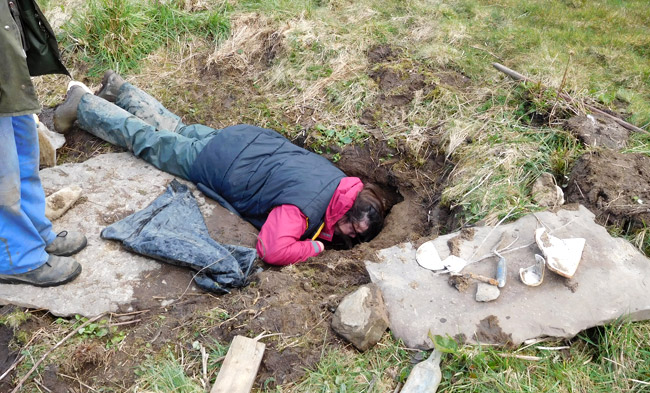Wall plaster with a red-painted finish has been found on an external wall
The building housing some of Britain's most famous Roman baths may have been painted red, archaeologists have said.
A dig at the site, in Bath, uncovered remnants of red paint on the outside wall - contradicting a widely-held assumption they were white in colour.
The discovery was made during a dig in an area of the world heritage site not currently open to the public.
Manager Stephen Clews said it would have helped the building to stand out to visitors.
"Our assumption was that it was white but it's turned out to be red," he said.
Read the rest of this article...





















